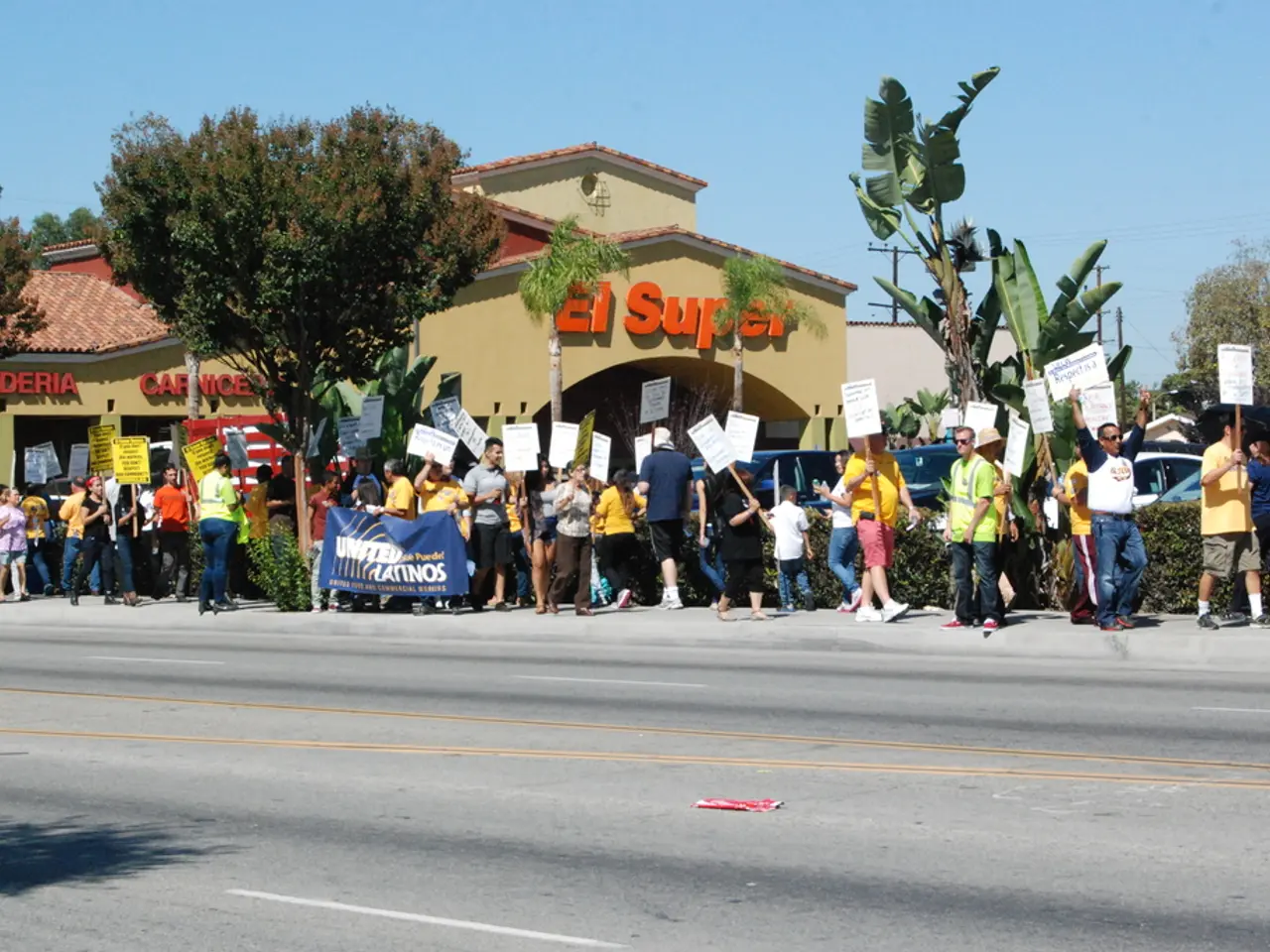Republicans and Democrats struggle to concur on fundamental facts, according to poll findings.
In the United States, political polarization has become a significant issue, affecting the way people view each other and the political landscape. According to a survey conducted by the Pew Research Center earlier this year, eight in ten adults believe that Democrats and Republicans can't agree on standard truths, a stark reflection of the growing divide.
This polarization is not only evident in Congress but also in state legislatures. Professor Jonathan Oberlander of the University of North Carolina noted that this division is substantially driven by Democrats' move to the left, and similar patterns of growing Democratic and Republican division are visible in state legislatures.
One of the causes of this political polarization can be traced back to long-term political realignment and social sorting that began decades ago. This realignment led to more ideologically cohesive and socially sorted coalitions along racial, religious, geographic, and personality lines, turning partisanship into a "mega-identity."
Another cause is the rise of partisan media ecosystems, exacerbated by the end of the Fairness Doctrine in 1987. This led to influential partisan outlets like Rush Limbaugh's radio show and the emergence of cable news channels like Fox News and MSNBC. Social media has also played a role by creating echo chambers, filter bubbles, and enabling misinformation spread, which contributes to increasing radicalization and polarized thinking patterns.
The effects of this polarization manifest in increasing disagreements over basic facts and an ideological divide so wide it obstructs consensus and fuels conflict. Polarization turns political differences into zero-sum conflicts where compromise becomes nearly impossible, damaging democracy by making dialogue and consensus rare.
Moreover, with polarized threat politics, the effects include heightened xenophobia, racism, and social division, as seen with rising anti-Asian hate crimes following political rhetoric blaming China for COVID-19. Such threat emphasis can increase partisan conflict and extremism domestically.
The dysfunction caused by polarization also contributes to broken governance, weak leadership, and widespread public cynicism. This produces legislative gridlock, making difficult problems like health care, climate change, and immigration more intractable.
Delia Baldassarri, a professor at New York University, argues that focusing on 'hyper-partisan' individuals contributes to a misrepresentation of the public. Instead, she suggests highlighting the gap between voters and parties and turning attention to the real causes of political division, including the power of interest groups, media fragmentation, rising inequality, and the nationalization of politics.
Despite the growing divide, eighteen percent of respondents in the Pew Research Center survey said voters in the major political parties can come to a consensus on basic facts even if they often disagree over plans and policies. However, a little more than half of the same respondents reportedly said a big reason is that Republican and Democratic voters are receiving different information.
Partisans now dislike the other party ('negative partisanship') more than they like their own party, a trend that contributes to the deepening divide. Two-thirds of the adults who believe Democratic and GOP voters can't agree on facts said a major reason is that partisan voters are interpreting the same information differently.
In conclusion, political polarization in the United States is a complex issue with deep roots in long-term political realignment, social sorting, the rise of partisan media, and the impact of social media. This polarization has significant effects on society, including broken governance, increased extremism, and social division, and it is a challenge that requires a comprehensive and thoughtful approach to address.
References:
[1] Iyengar, S., & Westwood, S. (2015). Is democracy dying? Journal of Democracy, 26(1), 5-21.
[2] Sunstein, C. R. (2017). #Republic: Divided democracy in the age of social media. Princeton University Press.
[3] Pew Research Center. (2020, October 28). Rising anti-Asian sentiment in the U.S. during the COVID-19 pandemic. Retrieved from https://www.pewresearch.org/fact-tank/2020/10/28/rising-anti-asian-sentiment-in-the-u-s-during-the-covid-19-pandemic/
[4] Levitsky, S., & Ziblatt, D. (2018). How democracies die. Crown.
[5] Mann, T., Ornstein, N., & Wilkerson, R. (2012). It's even worse than it looks: How the American constitutional system collided with the new politics of extremism. Basic Books.
- The complex issue of political polarization in the United States, prevalent in both Congress and state legislatures, can be attributed to long-term political realignment, social sorting, the rise of partisan media, and the impact of social media, as argued in works such as Iyengar & Westwood (2015), Sunstein (2017), and Mann, Ornstein, & Wilkerson (2012).
- Policies and legislations are often affected by the deepening divide between Democrats and Republicans, a reflection of the growing polarization in the political landscape. This divide, influenced by factors like media fragmentation and social sorting, has been highlighted in studies such as Levitsky & Ziblatt (2018) and the Pew Research Center's surveys.






